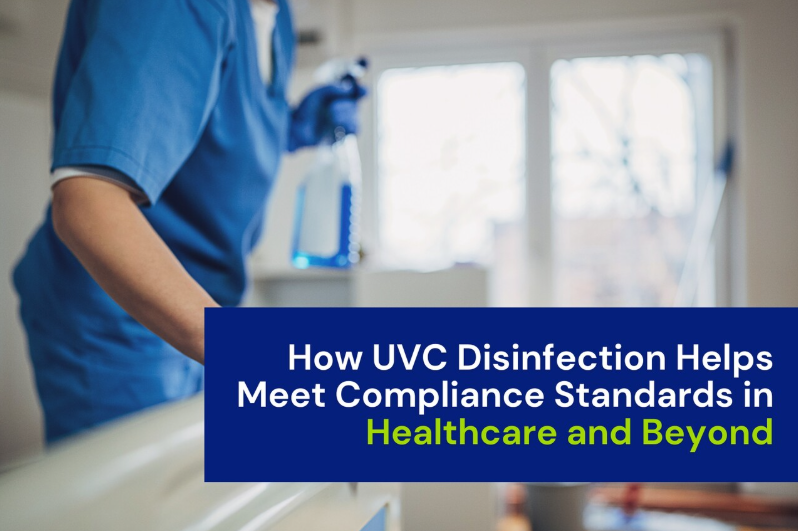Healthcare-associated infections (HAIs) remain a significant concern, not only compromising patient safety but also imposing substantial financial burdens on healthcare systems. In the United States alone, HAIs account for approximately 1.7 million infections and 99,000 deaths annually, costing the healthcare system an estimated $33 billion each year.
In response, regulatory bodies have established stringent compliance standards to mitigate these risks. Ultraviolet-C (UVC) disinfection has emerged as a powerful tool in meeting these standards, offering an effective means to reduce HAIs and enhance patient safety.
The Financial Impact of HAIs
Beyond the human toll, HAIs significantly strain healthcare finances. Treating these infections often leads to extended hospital stays, additional treatments, and increased readmission rates. For instance, a single surgical-site infection caused by methicillin-resistant Staphylococcus aureus (MRSA) can add over $61,000 in costs and prolong hospitalization by 23 days.
These figures underscore the importance of proactive infection prevention measures, not only to safeguard patients but also to maintain financial viability.
UVC Disinfection: Aligning with Compliance Standards
Regulatory agencies such as the Centers for Disease Control and Prevention (CDC) and the World Health Organization (WHO) emphasize the importance of effective disinfection protocols. UVC disinfection aligns with these guidelines by providing a chemical-free method to inactivate a broad spectrum of pathogens, including bacteria, viruses, and spores.
Moreover, UVC devices can be integrated into existing cleaning protocols, enhancing overall efficacy without disrupting workflows. Their ability to provide consistent and measurable disinfection supports compliance with standards set forth by organizations like the Joint Commission and the Occupational Safety and Health Administration (OSHA).
Compliance Checklist for Infection Control Officers
To effectively leverage UVC disinfection in meeting compliance standards, infection control officers should consider the following:
- Assessment of High-Risk Areas: Identify zones with elevated infection risks, such as operating rooms, intensive care units, and isolation wards.
- Integration into Protocols: Incorporate UVC disinfection into existing cleaning procedures, ensuring it complements manual cleaning efforts.
- Training and Education: Provide comprehensive training for staff on the proper use and maintenance of UVC equipment.
- Monitoring and Documentation: Implement systems to track disinfection cycles and maintain records for compliance verification.
Regular Maintenance: Schedule routine maintenance of UVC devices to ensure optimal performance and longevity.
- Beyond Healthcare: Applications in Correctional/Indoor Facilities and Government/Business Buildings
While hospitals are the primary beneficiaries, other institutions like correctional/indoor facilities* and government/business buildings** also face challenges in infection control. These environments often involve high-density populations, high- touch spaces, and limited access to natural ventilation, thus making them susceptible to outbreaks.
Implementing UVC disinfection for whole room, in-the-air, high-touch, and compact/mobile installations, in these types of settings can significantly reduce pathogen transmission. Utilizing UVC disinfection systems results in contributing to safer environments and compliance with public health regulations.
Investing in UVC disinfection technology is a proactive step toward meeting and exceeding compliance standards. By reducing HAIs, enhancing patient and staff safety, and aligning with regulatory requirements, UVC disinfection serves as a valuable and necessary asset in the pursuit of excellence in healthcare and beyond.
*Hotels, restaurants, jails, public bathrooms, gyms, schools, conference centers, etc.
**Retail spaces, factories, courtrooms, daycare centers, airports, waiting rooms, meeting spaces, etc.



